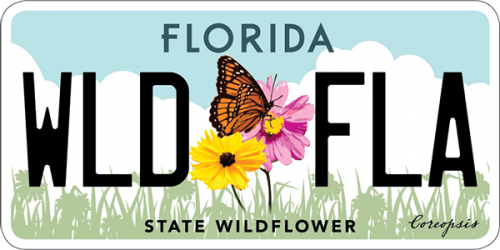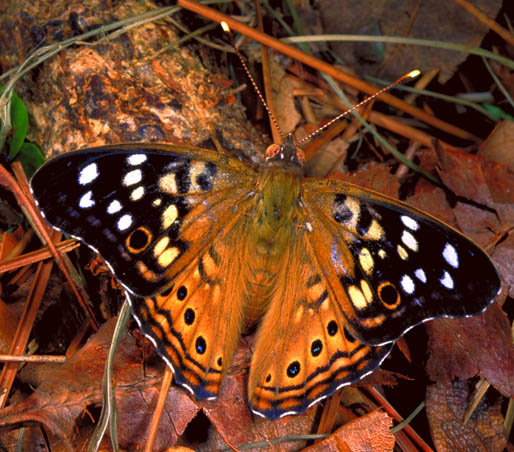- Family Name: Nymphalidae/Brush-Footed Butterflies
- General Description: Gray-brown; forewing triangular with white spots toward darker apex, a single solid black eyespot along the outer margin, and a broken innermost black cell bar. Hindwing with row of small, solid black spots. Ventral hindwing paler gray-brown with row of yellow-rimmed black eyespots with blue centers.
- Field Marks: Gray-brown; Forewing distinctly triangular with single black eyespot, white spots toward apex and a broken innermost black cell bar.
- Sexes: appear similar
- Wingspan: 48-65 mm
- Life Cycle: Egg: Cream-yellow, laid singly on the underside of host leaves Mature larva: Light green with numerous tiny yellow spots, yellow longitudinal stripes, and two short tails. Head with two short branched horns on the top. Chrysalis: Green with lighter markings
- Number of Generations: Three per year
- Flight Season: Spring through fall
- Abundance: Common
- Habitat: Stream margins, forest edges, moist woodlands, parks
- Counties:
- Larval Host Plants: Sugarberry (Celtis laevigata) and Common Hackberry (Celtis occidentalis)
- Similar Species: No similar species
- Additional Information: Young larvae overwinter in leaf shelters. Adults perch high on overhanging branches or tree trunks. Somewhat local in occurrence but often abundant near host trees.
 The Florida Wildflowers & Butterflies projects at the Florida Museum are sponsored in part by the State of Florida and the Florida Wildflower Foundation, Inc.
The Florida Wildflowers & Butterflies projects at the Florida Museum are sponsored in part by the State of Florida and the Florida Wildflower Foundation, Inc.
